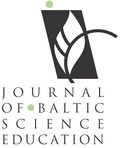THE EFFECT OF GAME-BASED LEARNING VIA KAHOOT AND QUIZIZZ ON THE ACADEMIC ACHIEVEMENT OF THIRD GRADE PRIMARY SCHOOL STUDENTS
| Title | THE EFFECT OF GAME-BASED LEARNING VIA KAHOOT AND QUIZIZZ ON THE ACADEMIC ACHIEVEMENT OF THIRD GRADE PRIMARY SCHOOL STUDENTS |
| Publication Type | Journal Article |
| Year of Publication | 2022 |
| Authors | Janković, A, Lambić, D |
| Journal | Journal of Baltic Science Education |
| Volume | 21 |
| Issue | 2 |
| Start Page | 224-231 |
| Pagination | Continuous |
| Date Published | April/2022 |
| Type of Article | Original article |
| ISSN | 1648-3898 |
| Other Numbers | E-ISSN 2538-7138 |
| Keywords | game-based learning, Kahoot, pre-test-post-test research design, primary education, Quizizz, science education |
| Abstract | The application of student response systems could have a lesser effect on the science education of younger students compared to the effects achieved with older students in language and social science courses. The aim of this research was to determine the effect of the application of Kahoot and Quizizz on the academic achievement of third grade primary school students (9 years old) in a natural sciences course. A total of 113 third grade primary school students participated in this research. During the experimental phase which lasted 4 weeks, the participants were divided into three groups. Out of two experimental groups one group used Kahoot as a learning aid, while the other used Quizziz. The third group was the control group. At the beginning and at the end of the experimental phase, the participants were given an academic achievement test. The results of this research showed that the experimental group which used Kahoot for learning the content of the natural sciences course achieved significantly higher results in the post-test than the control group. There were no significant differences in the academic achievement of the group which used Quizizz and the other two groups. This result indicated that Kahoot could be used effectively as a learning aid in third grade primary education in the field of natural sciences. |
| URL | https://oaji.net/articles/2022/987-1652122393.pdf |
| DOI | 10.33225/jbse/22.21.224 |
| Refereed Designation | Refereed |
| Full Text |
